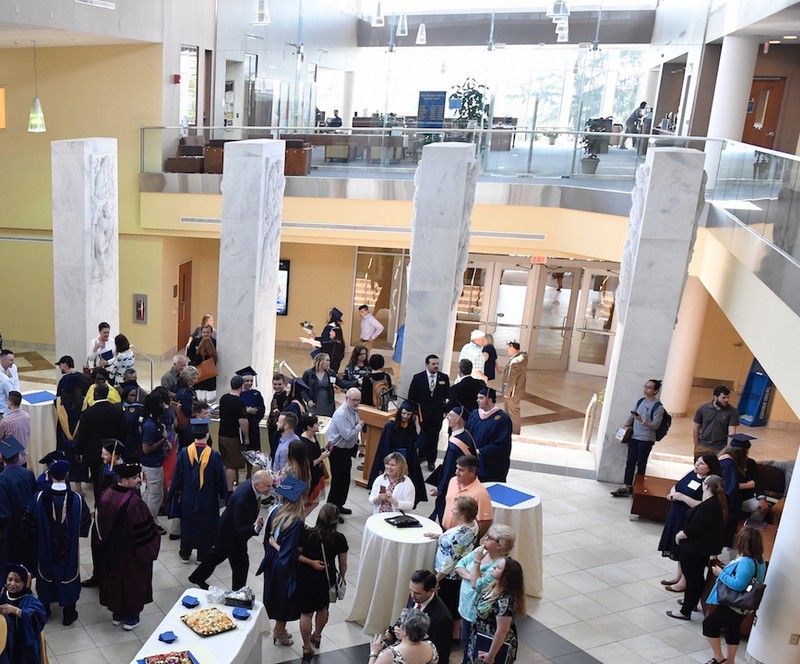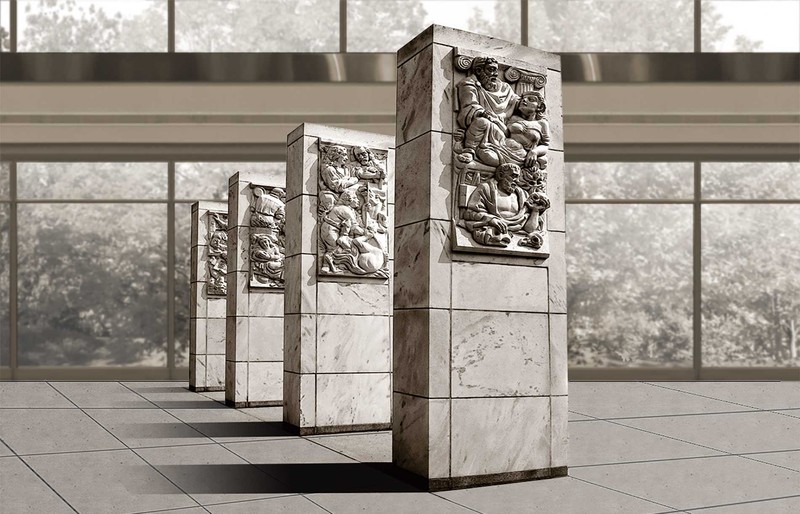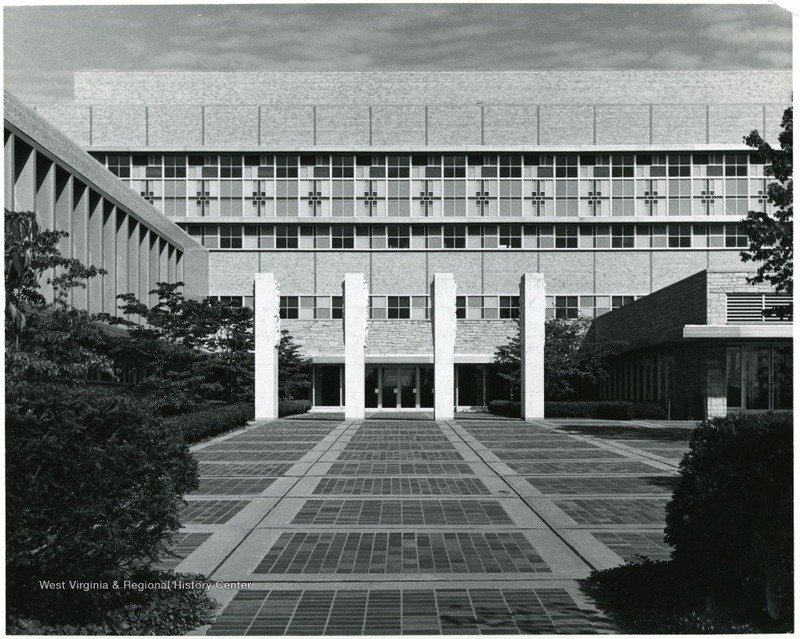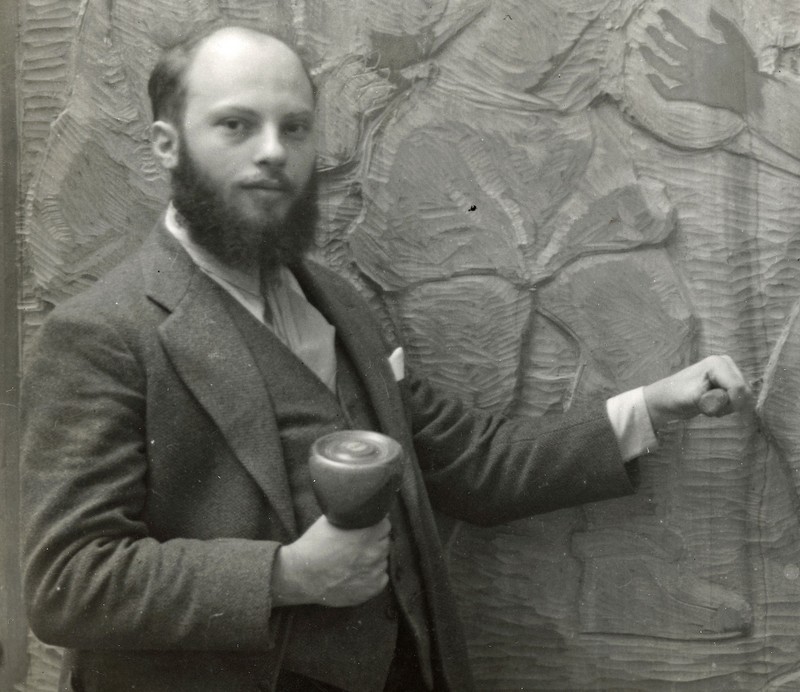Milton Horn’s History of Medicine Marble
Introduction
Text-to-speech Audio
Images
The Pylons today, located indoors at the WVU School of Medicine.


The Pylons were once located outdoors before the School of Medicine was renovated. Courtesy of WVU Libraries, West Virginia and Regional History Center.

Sculptor Milton Horn, known for his public works of art, created the History of Medicine sculpture to welcome new medical professionals into the field. Courtesy of Wikimedia Commons.

Backstory and Context
Text-to-speech Audio
Completed in 1956, these looming pylons celebrate medical accomplishments and advancements across modern history in the fields of pharmacy, dentistry, nursing, and medicine. With the word "pylon" coming from a Greek word meaning "gateway," the sculpture represents WVU as a gateway for students entering careers in medicine.
The sculpture was commissioned by Health Sciences architects in 1954. They hired sculptor Milton Horn, who was known for his public works of art. Born in 1906 in Kiev (now the capital of Ukraine, it was part of Russia until 1917), Horn immigrated to the United States in 1915. As a teenager, he studied under Henry Hudson Kitson, who sculpted military heroes such as the Minuteman at Lexington, Massachusetts in a realistic style. Horn developed his own unique style of sculpture while studying at the Beaux-Arts Institute of Design in New York City in the 1920s.
Early in his career, Horn created bas-relief sculptures for the Treasury Department's Section of Fine Arts in the 1930s and collaborated with Frank Lloyd Wright on some projects. Horn moved to Chicago in 1949 and began leaving his architectural mark on buildings across the city, including university buildings, a high school, and a synagogue.
With the development of WVU's Evansdale and Medical campuses in the 1950s, the University expanded in an unprecedented fashion. Campus buildings were constructed in modern architectural styles to reflect WVU's entrance into the prosperous postwar era. It was in this time that Milton Horn was commissioned to create a work of art to commemorate the new School of Medicine. He designed four towering pylons with bas-relief images of medical pioneers throughout history. These figures include:
- Hippocrates, the original patient advocate and one of the most prominent figures in medical history.
- Aristotle, best known as the Father of Western Philosophy.
- Benventus Grassus, the pioneer of ophthalmology, who studied the structures of the human eye.
- Louis Pasteur, who successfully developed a rabies cure in 1885.
- Pierre Fauchard, credited as being the Father of Modern Dentistry.
- William Harvey, who studied the circulation of blood throughout the human body.
- Steven Hales, who developed the process of measuring blood pressure.
- Andrea Vesalius, author of the first anatomy book based on human dissection.
- William Beaumont, the Father of Gastric Physiology and researcher of the human digestive system.
- Wilhelm Rontgen, who received the first Nobel Prize in Physics for discovering X-rays.
- Ephraim McDowell, the first person to successfully remove an ovarian tumor.
Sources
History of the Pylons. West Virginia University School of Medicine. Accessed July 10, 2018. https://medicine.hsc.wvu.edu/about/pylon-history/.
"Milton Horn, 88, A Sculptor Known For Public Artworks." New York Times. April 7, 1995. Accessed September 2018. https://www.nytimes.com/1995/04/07/obituaries/milton-horn-88-a-sculptor-known-for-public-artworks.html
